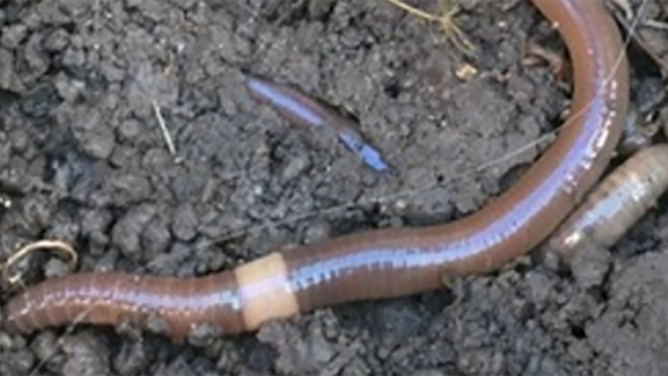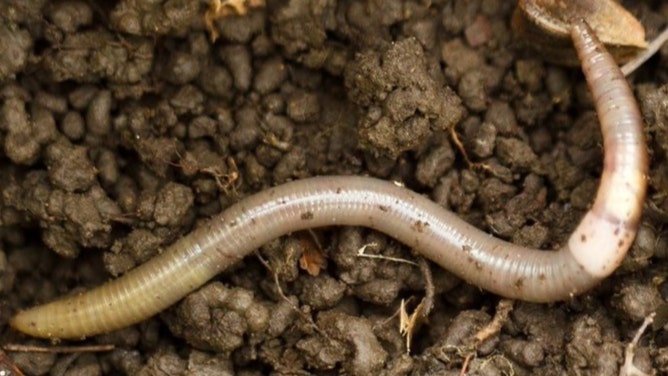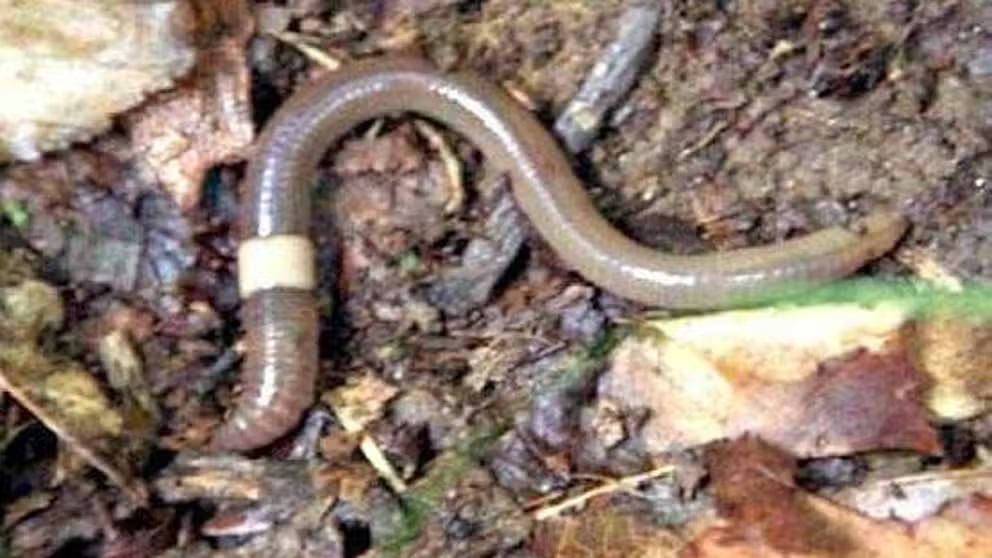They're back: Invasive jumping earthworms believed to be spotted in this Midwest state
The Asian jumping worm has many common names: Alabama jumpers, Jersey wrigglers, wood eels, snake worms and crazy snake worms. When disturbed, they thrash, spring up to a foot in the air and can even shed their tails to escape.
Worms that jump? They're out there
Even the nicknames for Asian jumping worms give you the heebie-jeebies: Jersey wriggles, wood eel, crazy snake worms. The reality is that these worms can strip nutrients out of the top layer of soil, severely damaging the roots of plants.
STURGEON BAY, Wis. – An invasive jumping earthworm – known for its aggressive behavior and ability to severely damage plants in its way – has been spotted in the Midwest.
The Asian jumping worm (Amynthas agrestis) has many common names: Alabama jumpers, Jersey wrigglers, wood eels, snake worms and crazy snake worms. When disturbed, they thrash, spring up to a foot in the air and can even shed their tails to escape.
Earlier this month, the worm might have nested in Door County, Wisconsin, after an invasive species team leader notified Sturgeon Bay city officials of a claim from a resident finding them in the city’s compost site, specifically in a mulch pile.
"Until the suspected issue has been resolved, we will treat the site as if it is infested," said Mike Barker, Sturgeon Bay's municipal services director. "There will be no removal of mulch or compost from the city’s compost site."
Barker said the city is working with the county and the Wisconsin Department of Natural Resources (DNR) to investigate the report.
JUMPING WORMS THAT TRASH ECOSYSTEMS COULD BE WRIGGLING THROUGH YOUR GARDEN

Asian jumping worms are a relatively new invasive species, but they are rapidly spreading across the U.S.
(Cornell Cooperative Extension)
State wildlife officials said the worms can quickly transform soil into dry, granular pellets with a texture like discarded coffee grounds. The altered soil structure then depletes the soil of nutrients, causing invasive plants to thrive.
The invasive earthworms were first confirmed in Wisconsin in 2013. Surprisingly, all earthworms in the state are non-native.
There have been no native earthworms in Wisconsin since the last glacier moved through the state thousands of years ago, scouring the landscape down to the bedrock, according to state DNR officials.
Wildlife officials said the worms have been unintentionally spread because their tiny cocoons move undetected in soil and mulch.
THESE HOMEMADE GARDEN TRICKS CAN HELP KEEP CRITTERS OUT, SOIL MOISTURE IN CHECK

The invasive Asian jumping worm (Amynthas agrestis) has many common names: Alabama jumpers, Jersey wrigglers, wood eels, snake worms, and crazy snake worms.
(Tom Potterfield via U.S. Forest Service)
Relatively little known about Asian jumping worms
There are more than 7,000 species of worms on the planet, and at least three relatively new species of these non-native, invasive worms have begun to spread rapidly across the U.S.
They can live anywhere from urban parks and suburban backyards to rural forests. The worms can strip nutrients out of the top layer of soil, severely damaging the roots of plants. The U.S. Forest Service has even warned gardeners about these damaging critters.
The first records of Asian jumping earthworms date back to the late 19th century, according to researchers at Cornell University.
Relatively little is known about them compared to commonly known European nightcrawlers that are now being displaced by the destructive worms. An adult jumping worm can measure up to 8 inches, grow twice as fast, reproduce more quickly and can infest soils at higher densities compared to their counterpart.
